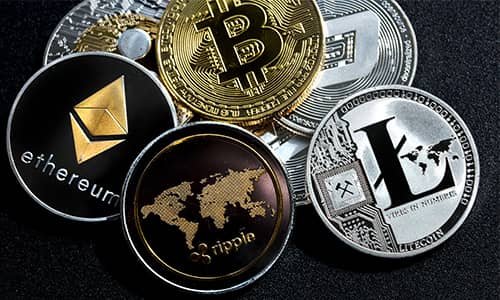
In recent years, the world of finance has witnessed a revolutionary transformation with the rise of Decentralized Finance, commonly known as DeFi. This new frontier in the financial ecosystem promises to democratize access to financial services, reduce reliance on traditional financial institutions, and create a more transparent and inclusive financial system. If you’re new to DeFi and eager to understand its intricacies, this guide is for you.
What is Decentralized Finance (DeFi)?
Decentralized Finance, or DeFi, refers to a system of financial applications built on blockchain technology, primarily Ethereum. Unlike traditional finance, which relies on centralized intermediaries such as banks and financial institutions, DeFi operates on decentralized networks using smart contracts. These smart contracts are self-executing agreements with the terms of the contract directly written into code, eliminating the need for intermediaries.
Key Components of DeFi
To understand DeFi, it’s essential to familiarize yourself with its key components:
- Blockchain Technology: The backbone of DeFi, blockchain is a decentralized ledger that records all transactions across a network of computers. Ethereum is the most popular blockchain for DeFi applications due to its robust smart contract capabilities.
- Smart Contracts: These are self-executing contracts with the agreement terms directly written into code. They automate and enforce contractual agreements without intermediaries, ensuring trust and transparency.
- Decentralized Applications (DApps): These are applications that run on a decentralized network rather than a centralized server. DApps leverage smart contracts to provide various financial services such as lending, borrowing, trading, and investing.
- Tokens: In the DeFi ecosystem, tokens represent various assets or rights. The most common types are utility tokens, which provide access to a service, and governance tokens, which allow holders to vote on protocol changes.

Popular DeFi Applications
The DeFi landscape is diverse, with numerous applications catering to different financial needs. Some of the most popular DeFi applications include:
- Decentralized Exchanges (DEXs): Unlike traditional exchanges, DEXs allow users to trade cryptocurrencies directly with each other without intermediaries. Popular DEXs include Uniswap, SushiSwap, and PancakeSwap.
- Lending and Borrowing Platforms: Platforms like Aave, Compound, and MakerDAO enable users to lend their cryptocurrencies and earn interest or borrow against their crypto holdings.
- Stablecoins: These are cryptocurrencies pegged to a stable asset, such as the US Dollar, to reduce volatility. Examples include Tether (USDT), USD Coin (USDC), and Dai (DAI).
- Yield Farming and Liquidity Mining: These practices involve providing liquidity to DeFi protocols in exchange for rewards. Yield farming can generate high returns, but it comes with significant risks.
- Insurance: DeFi insurance platforms like Nexus Mutual offer coverage against risks such as smart contract failures and exchange hacks.
- Prediction Markets: Platforms like Augur and Gnosis allow users to bet on the outcome of various events, from sports to elections, using cryptocurrency.
Advantages of DeFi
DeFi offers several compelling advantages over traditional finance:
- Accessibility: DeFi applications are open to anyone with an internet connection, providing financial services to the unbanked and underbanked populations.
- Transparency: All transactions on the blockchain are public and verifiable, reducing the potential for fraud and corruption.
- Control: Users retain control of their assets and private keys, eliminating the need to trust intermediaries.
- Innovation: DeFi’s open-source nature encourages innovation and the rapid development of new financial products and services.
- Interoperability: Many DeFi applications are designed to work seamlessly with each other, creating a cohesive and versatile financial ecosystem.
Risks and Challenges
Despite its potential, DeFi is not without risks and challenges:
- Smart Contract Vulnerabilities: Smart contracts are immutable once deployed, making it crucial to ensure their code is secure. Bugs or vulnerabilities can lead to significant financial losses.
- Regulatory Uncertainty: The regulatory landscape for DeFi is still evolving, and future regulations could impact the development and adoption of DeFi applications.
- Market Volatility: Cryptocurrencies are known for their price volatility, which can affect the stability and value of DeFi investments.
- Liquidity Risks: While DeFi offers high returns, it also comes with liquidity risks. Sudden market movements or protocol changes can lead to significant losses.
- User Error: Managing private keys and interacting with DeFi protocols requires a certain level of technical knowledge. Mistakes can result in the loss of funds.
Getting Started with DeFi
If you’re interested in exploring DeFi, here’s a step-by-step guide to get started:
- Set Up a Wallet: To interact with DeFi applications, you’ll need a cryptocurrency wallet. MetaMask is a popular choice that supports Ethereum-based DApps.
- Acquire Cryptocurrency: Purchase some Ethereum (ETH) or other cryptocurrencies from a centralized exchange like Coinbase or Binance. You’ll need ETH to pay for transaction fees on the Ethereum network.
- Transfer Funds to Your Wallet: Transfer your purchased cryptocurrency from the exchange to your wallet.
- Explore DeFi Applications: Visit DeFi platforms and start experimenting. Begin with small amounts to get a feel for how each application works.
- Educate Yourself: DeFi is complex, and the landscape is constantly evolving. Stay informed by reading articles, joining communities, and following experts in the field.
- Manage Risks: Only invest what you can afford to lose, and diversify your investments to spread risk.
The Future of DeFi
The future of DeFi looks promising, with ongoing innovations and increasing adoption. Key trends to watch include:
- Layer 2 Solutions: To address scalability issues, Layer 2 solutions like Optimistic Rollups and zk-Rollups are being developed to reduce transaction fees and increase throughput.
- Interoperability: Cross-chain solutions aim to enable seamless interaction between different blockchain networks, enhancing the versatility of DeFi applications.
- Institutional Adoption: As DeFi matures, more institutional investors are likely to enter the space, bringing additional liquidity and legitimacy.
- Regulatory Clarity: Clearer regulations will help protect users and encourage more widespread adoption while maintaining the innovative spirit of DeFi.

Conclusion
Decentralized Finance (DeFi) is revolutionizing the financial landscape by providing accessible, transparent, and innovative financial services. While it offers significant opportunities, it also comes with risks that require careful consideration. By understanding the fundamentals of DeFi and staying informed about its developments, you can navigate this exciting new frontier with confidence.
Whether you’re looking to lend your assets, trade cryptocurrencies, or explore new financial products, DeFi offers a wealth of opportunities for those willing to dive in and explore. As always, conduct thorough research, manage risks prudently, and stay curious about the ever-evolving world of decentralized finance.